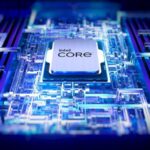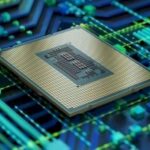
Regular HotHardware readers and common {hardware} fanatics most likely already know this, however SiSoftware is the creator and maintainer of the SANDRA utility for Windows PCs. Originally created as a software to easily seize and show system info (as Windows’ personal capabilities in that regard have been fairly primitive when SANDRA was new), SANDRA is now primarily used as a benchmark suite.
Usually, checks carried out utilizing SANDRA get uploaded to SiSoftware’s database where of us can peruse the outcomes and evaluate them towards different checks. What this finally means is that the developer has entry to an incredible database of benchmark outcomes for {hardware} outdated and new. Sometimes, these outcomes embody checks carried out on pre-release {hardware}, as you have little question seen reported many instances on this very web site.
Most of the leaked specs match the specs we have seen in prior leaks. The preliminary CPUs have eight Raptor Cove P-cores with 2MB of L2 cache, in addition to 4 clusters of “Gracemont” E-cores that share 4MB of L2 cache per cluster. That’s a major improve in L2 cache (230%) in comparison with Alder Lake.
SiSoftware marks down a peak clock price of three.7 GHz for the P-cores on the purported Core i9-13900, whereas the E-cores prime out at 2.76 GHz. The former is probably going down to those being pre-release processors, however the latter lower-clocked E-cores could be meant to enhance the little cores’ effectivity.
The “Arithmetic Native” chart right here measures integer and floating level math efficiency with particular knowledge varieties. These check do not make use of SIMD, so there is no SSE or AVX magic happening right here; these are as primary because it will get. You could be shocked to study that lots of purposes nonetheless use these sorts of directions, so this efficiency is not irrelevant in any respect.
This chart is basically the identical check, however utilizing every chip’s quickest SIMD directions. That means AVX2 on all the things apart from the Core i9-11900K, which might make the most of unlocked AVX-512 assist to permit it to hold with the twelve-, sixteen-, and 24-core chips within the comparability.









